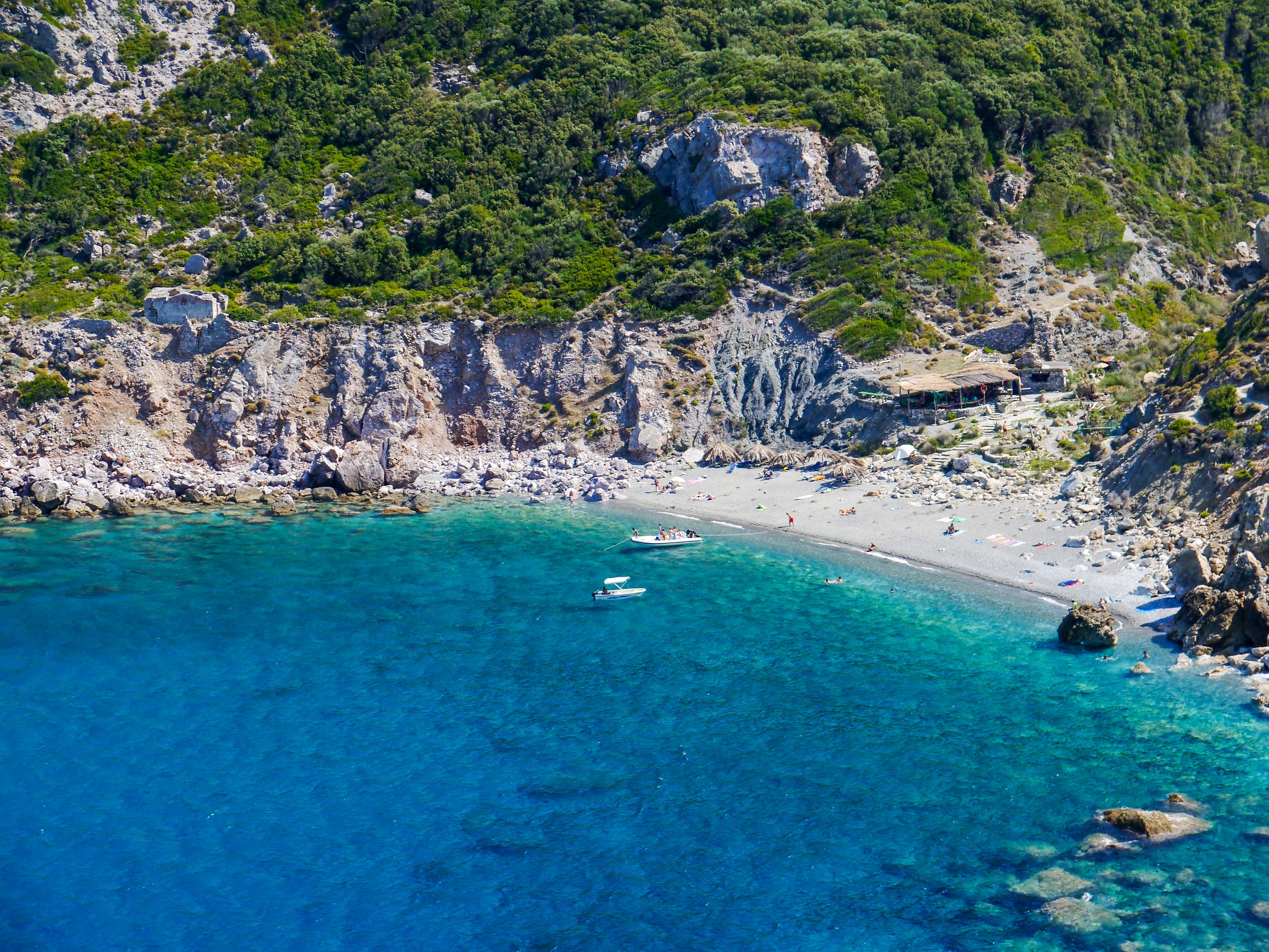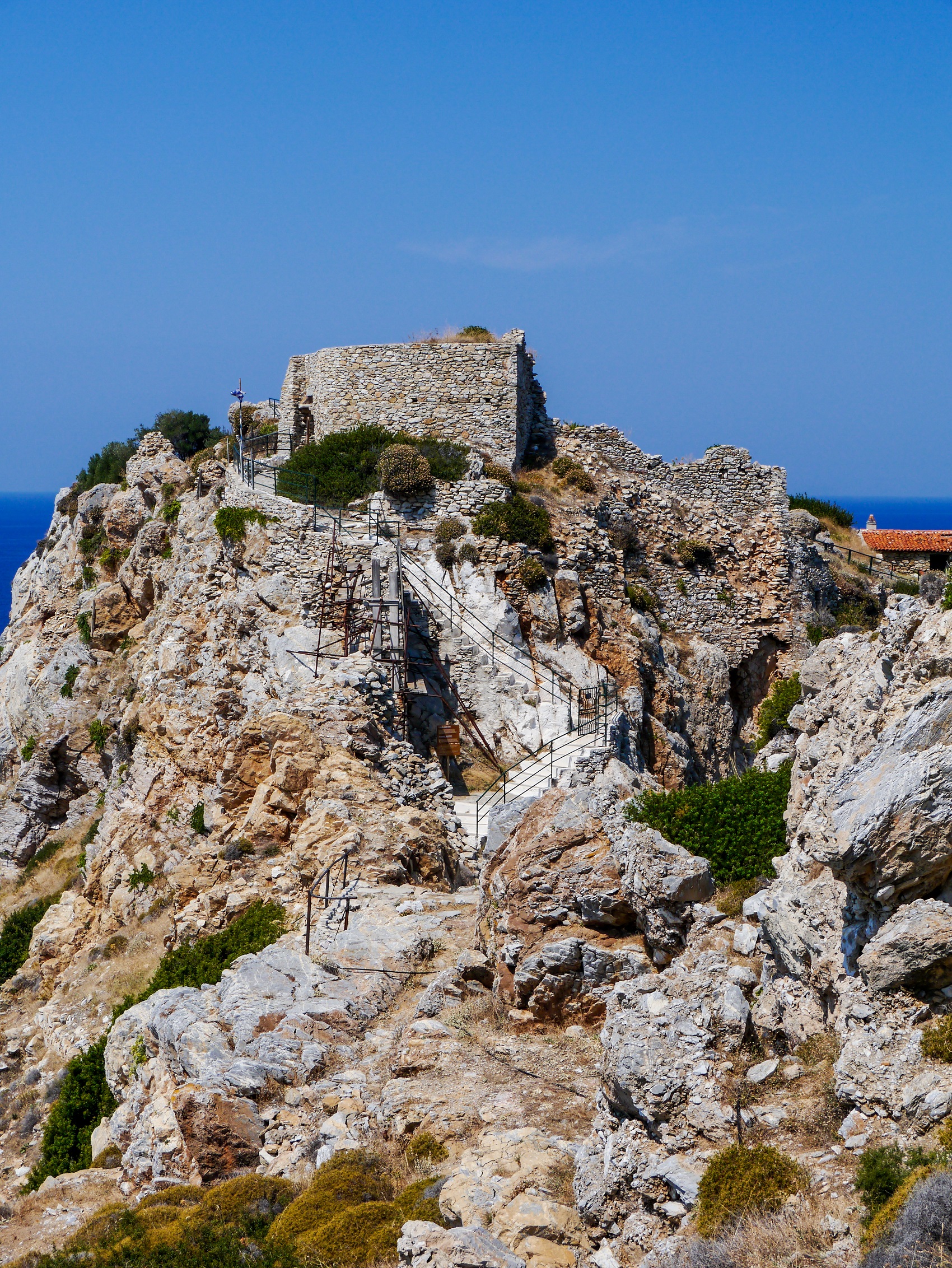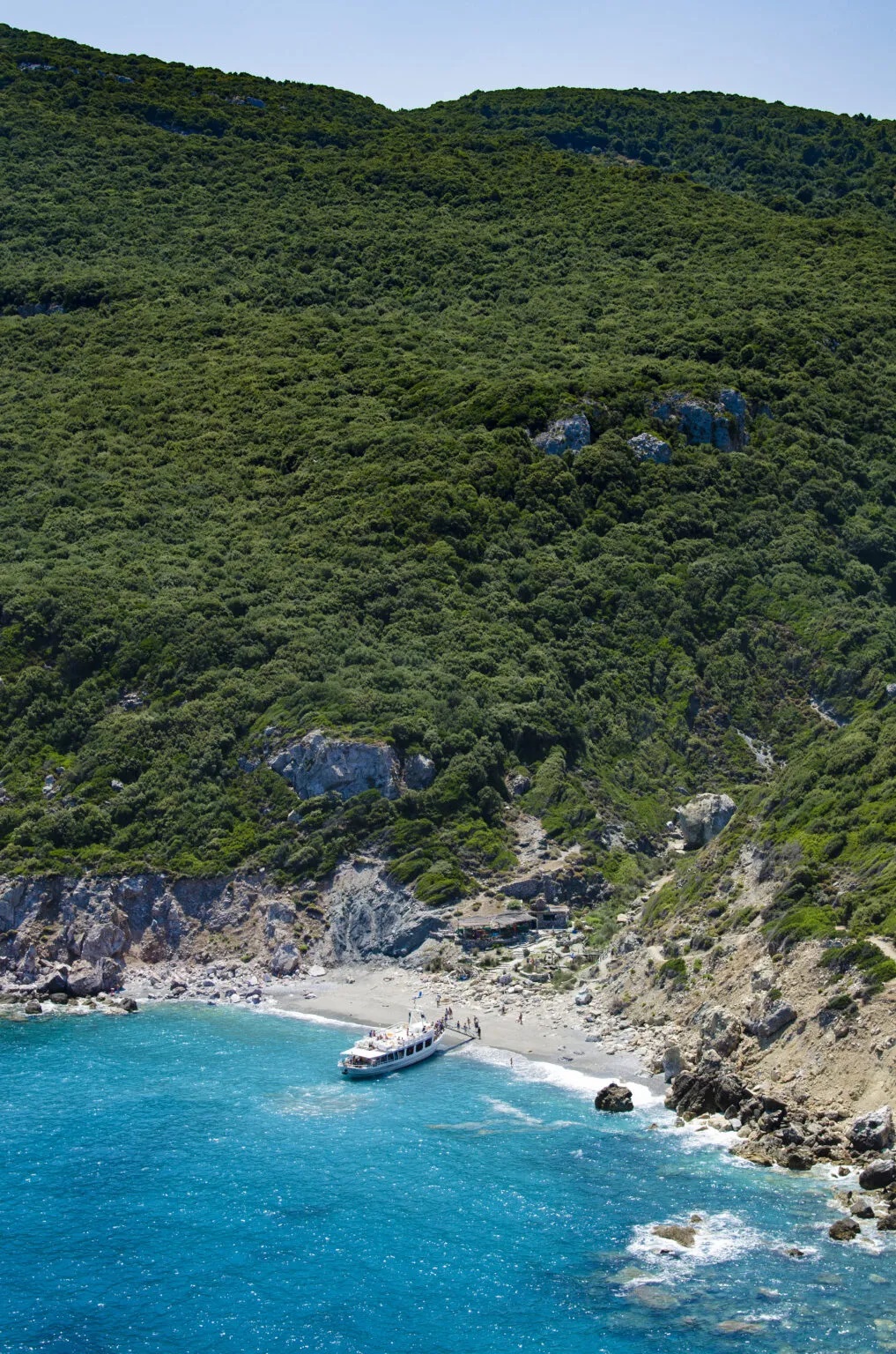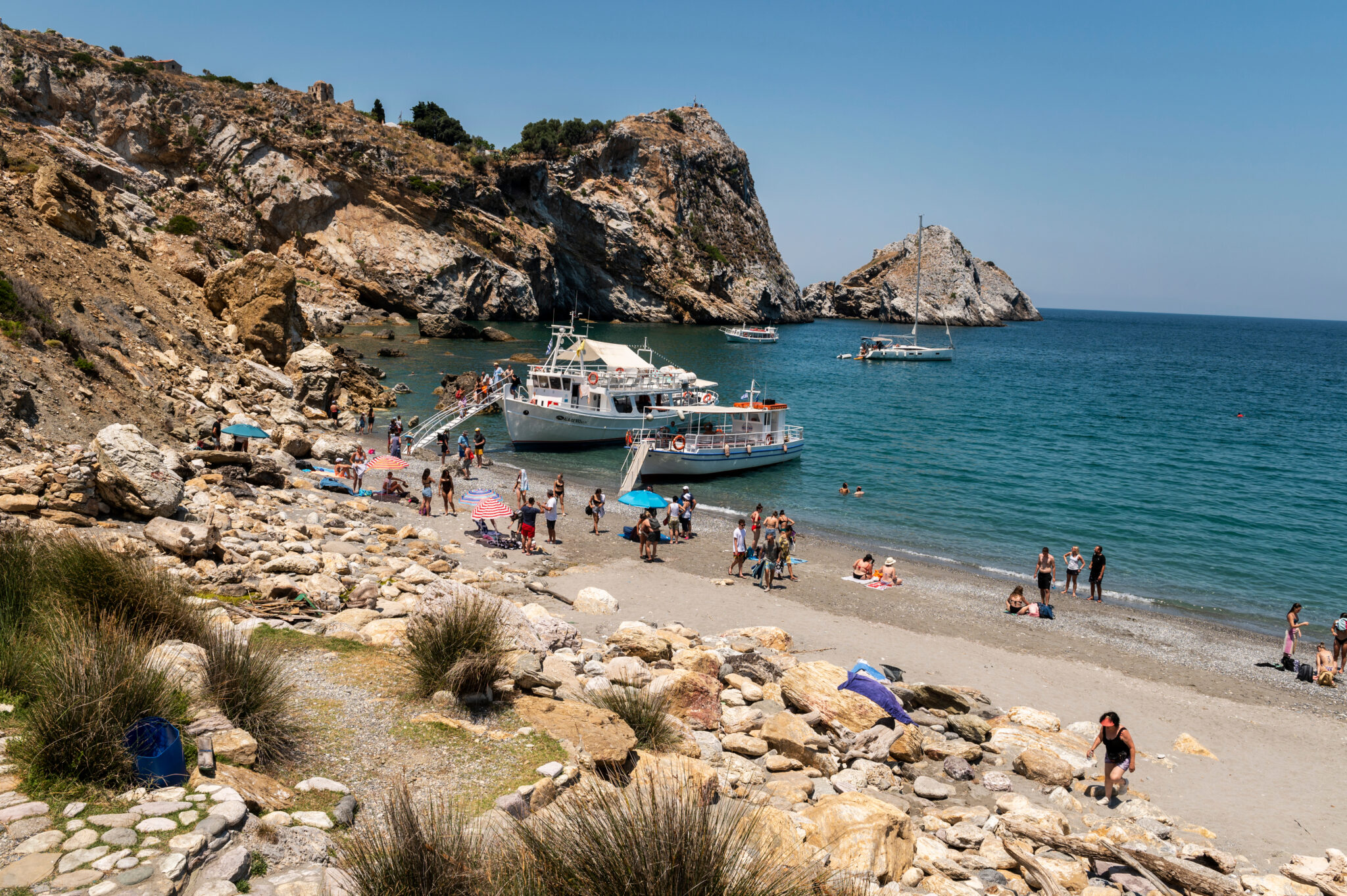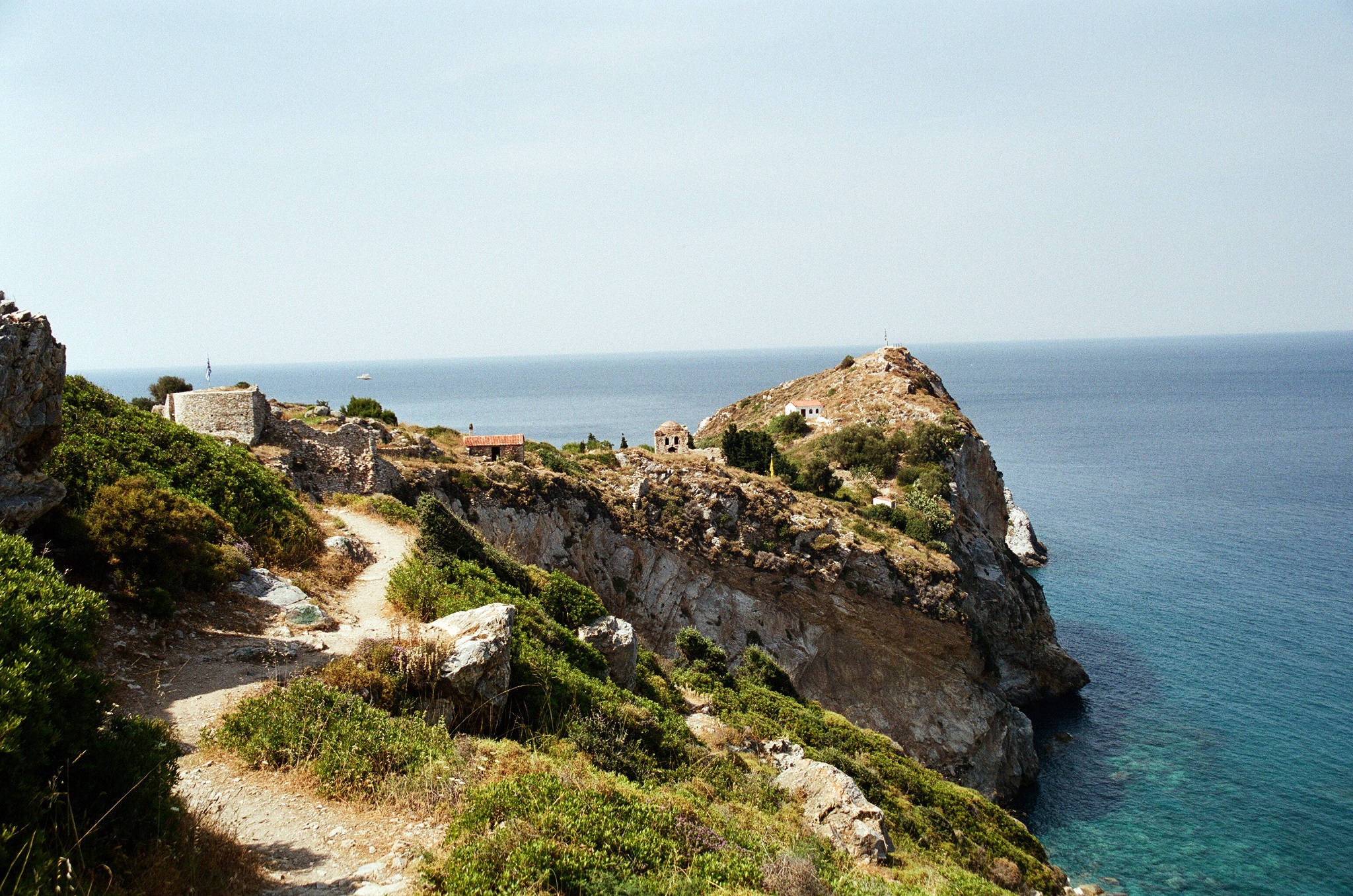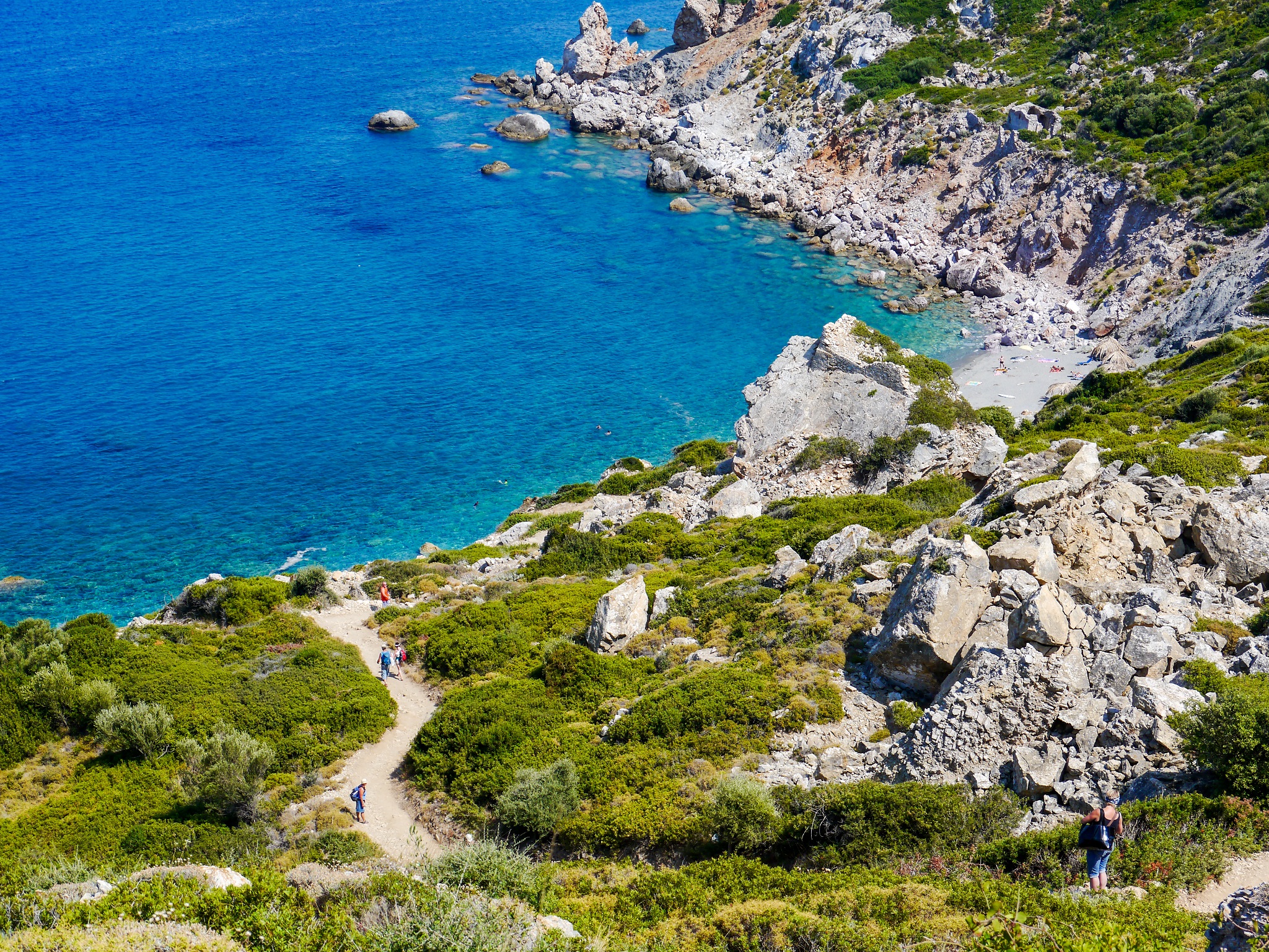Despite the unpredicted upheaval of the COVID-19 pandemic in 2020, Skiathos enjoyed significant praise in the travel press. The esteemed readers of ‘Conde Nast Traveller’ honoured it as the island with the best beaches for 2019, under the yearly Readers’ Choice Awards. This news went around the world, boosting the island’s already vibrant and cosmopolitan reputation, and enhancing its appeal as a summer hotspot.
But, despite this acknowledgement, and the hordes of visitors that arrive each summer, some parts of Skiathos are lesser-known, only explored by the adventurous who veer away from the most popular beaches, such as Koukounaries. Such is the case with the charming, secluded coastline of Kastro, at the island’s most northerly point.
The area, indeed, is not a secret. It’s the site of the ancient castle town of Skiathos, dating back to Byzantine times and viewed as an impressive spectacle. However, the beach beneath the towering ruins is less well-known, due to the challenging access.
The Coastline of the Old, Medieval Town
Kastro beach, located at the most northerly point of Skiathos, shares its name with the medieval, fortified city of Skiathos, founded here in 1360, on a rocky outcrop. This location offered natural defence, ringed on three sides by steep rocks, which required minimal walls: the primary fortress was built in the south, where the only entrance was located, safeguarded by a drawbridge and a moat. The decision by the then residents was strategic, as they were searching for a new location for their city following significant destruction from Ottoman pirates.
Following the Fall of Constantinople in 1453, the island came under the control of the Venetians. These were oppressive rulers. So, when the fleet of the Ottoman Admiral Hayreddin Barbarossa appeared, instigating the siege of the Castle, the locals rebelled. They overpowered the Venetian governor, hoping for better treatment by surrendering. Unfortunately, they received none. Ultimately, in 1829, Skiathos joined the emerging Greek state, and the Castle was subsequently deserted. Only two churches remained in use. The populace resettled the city of Skiathos in its former and current location. Now, the site of the medieval city is a protected area, covering approximately 25 acres. It’s generally accessible – offering a unique experience, with stunning views of the neighbouring Castronisia and the Aegean – except during times of substantial maintenance work on the site.
The hidden coast of the Castle is considered one of the most unique and peaceful on Skiathos. It’s not a large area, framed by rocky cliffs and lush greenery (the vegetation, like the rest of the island, is notably present) and is made up of a grey sand mixed with pebbles. The waters are clear, deep, and blue; a swim here is a unique experience, thanks to the incredible view of the medieval city above and the chapel of the Nativity of Christ standing tall, built on a rock. It’s a single-aisle basilica, with a grand interior, which will remind you of tales from Alexander Papadiamantis.
Such a beach, as you can imagine is quite unorganised, so if you’re looking for shade under an umbrella, you should bring your own. However, you won’t need to bring other provisions; during the summer, you’ll find the “Kastro Beach” shop operating from sunrise to sunset, offering shade, water, coffee, refreshments, and fresh, cold sandwiches. At midday, they always prepare something, mezze-style.
Those who have visited many times suggest finding the trail located behind “Kastro Beach” and following it into the coastal forest. At some point, you’ll reach an old watermill via a simple and brief path.
Finally, if you’re planning to swim when visiting the Castle, it’s prudent to consider the weather report to ensure calm seas. If the winds aren’t coming from the south, west, southwest or southeast, you might want to reschedule your visit.
How to Get There?
Reaching Kastro Beach is somewhat of an adventure. It’s certainly achievable but does present a few challenges. There are two main ways to get there: by sea or on foot. The easiest option is by sea, thanks to the local boatmen and their sturdy boats, known as “lantzes”. These little sea vessels make daily trips during the warm summer months, sailing from the old beach of Skiathos town to Kastro and the neighbouring Lalaria. You could also consider charter boats, which offer a full island tour. However, remember that they operate on a strict timetable, limiting your time at this peaceful spot.
Alternatively, you can reach Kastro by car and foot. Most visitors base themselves in Skiathos town, and that’s where the journey begins. Drive along the main island road, which is paved and straightforward. Follow this road north for around 12 kilometers until you reach the small church of Panagia Kardasia, where the tarmac ends. From here, you’ll follow a stone-paved trail that takes you directly to the medieval castle.
The trail from the castle to the beach is truly beautiful. Some daring travellers opt to drive this trail, parking at the end, near the church of Ai-Giannis, just outside Kastro. However, be aware, it’s narrow and can become crowded in the summer. At some points, it’s too narrow for two vehicles to pass each other. For this reason, many visitors prefer to park at Panagia Kardasia and walk the trail, a journey that typically takes around 30 to 35 minutes.
From Kastro, you’ll see the path that leads down to the beach. The pathway, lined with stairs, takes you down to the sandy paradise in roughly 15-20 minutes. Remember, though, that you’ll have to climb the same path to return, and it’s uphill all the way back.
Read also:
Glittering Gems: A Guide to Skiathos’ Best Beaches



